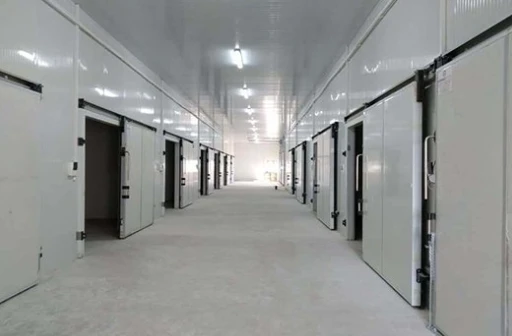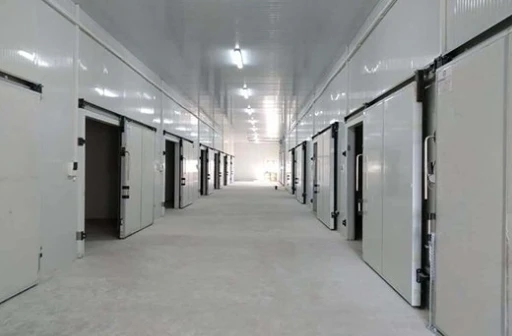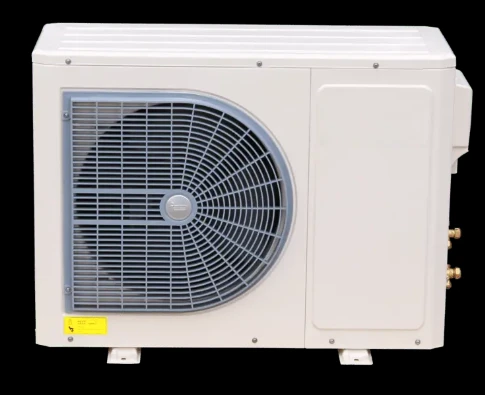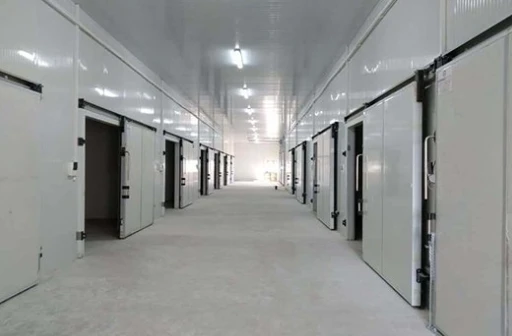Pro Vacuum Freezer Machine: Ultimate Freshness & Preservation
Introduction to Advanced Vacuum Cooling Technology
In the realm of modern post-harvest preservation and industrial cooling, the efficiency and efficacy of equipment are paramount. Traditional cooling methods often involve significant energy consumption and can compromise product quality through uneven temperature reduction. Addressing these challenges, the vacuum freezer machine emerges as a revolutionary solution, offering rapid, uniform, and energy-efficient cooling for a diverse range of perishables and industrial applications.
This technology leverages the principle of evaporative cooling under reduced pressure, enabling rapid heat extraction from products without the need for ice or extensive refrigeration cycles. Primarily used for vegetables, fruits, and prepared foods, these machines are increasingly finding applications in industrial processes requiring precise temperature control and an airtight freezer machine environment.
The demand for sustainable and high-performance cooling systems has propelled the vacuum freezer machine into the spotlight, offering unparalleled advantages in terms of shelf-life extension, nutrient retention, and operational cost reduction. Its ability to create a vacuum-sealed, low-temperature environment is crucial for maintaining the integrity of sensitive materials.
Industry Trends and Market Dynamics
The global market for advanced cooling solutions is experiencing robust growth, driven by increasing consumer demand for fresh produce, stringent food safety regulations, and the imperative for sustainable agricultural practices. According to recent market analysis, the vacuum cooling technology segment is projected to grow at a CAGR of over 7% through 2028, primarily fueled by innovations in cold chain logistics and the expansion of fresh-cut produce markets. Manufacturers are increasingly investing in sophisticated technologies to provide a reliable freezer airtight machine, catering to the evolving needs of the food processing and pharmaceutical industries.
Key trends include the integration of IoT for remote monitoring and predictive maintenance, modular designs for scalability, and enhanced energy recovery systems to minimize environmental impact. The shift towards reducing food waste also positions the vacuum cooler machine as a critical tool for extending the market reach and profitability of agricultural products.
Furthermore, the rising adoption of vacuum cooling in non-food sectors, such as precision manufacturing and chemical processing, underscores its versatility and effectiveness as a vacuum chiller for various industrial applications requiring precise temperature control and an inert environment.
Technical Principles and Process Flow of a Vacuum Freezer Machine
The operational principle of a vacuum freezer machine is rooted in the physics of evaporative cooling. When water evaporates, it absorbs latent heat from its surroundings, causing a significant temperature drop. By reducing the ambient pressure within a sealed chamber, the boiling point of water is drastically lowered. For instance, at a pressure of 611.7 Pascals (0.006 atmospheres), water boils at 0°C. This allows for rapid and uniform cooling of products by evaporating a small percentage of their surface moisture.
Manufacturing Process of Key Components:
Manufacturing a high-performance vacuum cooling system involves meticulous engineering and adherence to stringent quality controls. Key components, such as the vacuum chamber, refrigeration unit, vacuum pump system, and control interface, are crafted with precision:
- Vacuum Chamber Fabrication: Constructed from high-grade stainless steel (e.g., SUS304 or SUS316L) for superior corrosion resistance and hygiene. The chamber walls undergo precision CNC machining to ensure a flawless interior surface and dimensional accuracy. Welding processes, such as TIG welding, are used to create airtight seals, followed by radiographic inspection to detect any imperfections.
- Refrigeration System Assembly: This includes compressors, condensers, evaporators (cold traps), and expansion valves. Components are typically sourced from globally recognized manufacturers. Evaporators are often constructed with finned copper tubes or stainless steel plates, optimized for maximum heat exchange. Brazing techniques are employed for refrigerant line connections, followed by pressure testing to ANSI/ASHRAE 15 standards.
- Vacuum Pump System Integration: Comprising rotary vane pumps or dry screw pumps, often paired with booster pumps for rapid evacuation. Components are precisely cast or forged from durable alloys, then subjected to high-precision CNC machining to achieve tight tolerances and optimal operational efficiency. Each pump undergoes rigorous performance testing to ensure vacuum levels and longevity.
- Control System Development: Advanced PLC (Programmable Logic Controller) systems are integrated with HMI (Human-Machine Interface) touchscreens, providing intuitive operation and real-time monitoring. Electrical components adhere to IEC and UL standards, ensuring safety and reliability.
Process Flow Schematic:
Below is a simplified representation of the operational steps within a vacuum cooling cycle:
- 1. Loading: Products (e.g., vegetables, baked goods) are placed into the vacuum chamber, often on trolleys.
- 2. Sealing: The vacuum chamber door is sealed, creating an airtight environment.
- 3. Vacuum Evacuation: Vacuum pumps rapidly extract air from the chamber, reducing pressure.
- 4. Evaporative Cooling: As pressure drops, moisture on the product surfaces evaporates, absorbing heat and quickly lowering the product temperature.
- 5. Vapor Condensation (Cold Trap): The evaporated water vapor is drawn to a cold trap (evaporator coils) within the chamber, where it condenses back into liquid or ice, effectively removing heat from the system.
- 6. Ventilation & Unloading: Once the target temperature is reached, the vacuum is released, and the cooled products are removed.
Quality assurance involves rigorous testing, including ISO 9001 certified manufacturing processes, ASME Boiler and Pressure Vessel Code (BPVC) compliance for vacuum vessels, and pressure drop tests according to DIN EN 13184 standards to ensure structural integrity and leak-proof performance. Typical service life for well-maintained units ranges from 15 to 25 years.

Technical Specifications and Parameters
To provide a clear understanding of the capabilities of a modern vacuum freezer machine, here are typical product specifications. These parameters are crucial for engineers and procurement specialists in selecting the appropriate system for their specific operational demands.
Typical Product Specification Table:
| Parameter | Value/Range | Unit |
|---|---|---|
| Cooling Capacity | 500 - 5000 | kg/batch |
| Cooling Time | 15 - 30 | minutes (to 3°C) |
| Target Product Temperature | 0 - 15 | °C |
| Vacuum Pump Type | Oil-lubricated rotary vane / Dry screw pump | - |
| Ultimate Vacuum | < 100 | Pa (0.75 Torr) |
| Refrigerant | R404A / R448A (Eco-friendly options) | - |
| Power Supply | 3-Phase, 380V/50Hz or 480V/60Hz | - |
| Power Consumption | 15 - 80 | kW (batch dependent) |
| Chamber Material | Food-grade SUS304 / SUS316L | - |
| Control System | PLC with HMI Touchscreen | - |
Technical Advantages and Performance Benefits
The technical prowess of a vacuum freezer machine extends beyond mere temperature reduction, offering a suite of advantages crucial for modern industrial and agricultural operations:
- Rapid and Uniform Cooling: Unlike conventional methods that cool from the outside-in, vacuum cooling cools products rapidly and uniformly throughout their core. This significantly reduces cooling time from hours to minutes, preserving product freshness and reducing metabolic activity effectively.
- Energy Efficiency: By leveraging the latent heat of vaporization, vacuum coolers often consume less energy per unit of product compared to forced-air cooling, especially for high-moisture content goods. Integrated heat recovery systems can further enhance efficiency by reusing energy from the refrigeration cycle.
- Extended Shelf Life: Rapid cooling inhibits microbial growth and enzyme activity, significantly extending the shelf life of fresh produce and preventing premature spoilage. This is a critical factor for global supply chains.
- Enhanced Product Quality: Reduced cooling time minimizes moisture loss and maintains the natural color, texture, and nutritional value of products. For items like leafy greens, wilting is virtually eliminated.
- Corrosion Resistance & Hygiene: Constructed with food-grade stainless steel (SUS304/316L) and designed for easy cleaning, these machines offer excellent resistance to corrosion from organic acids and sanitizing agents, ensuring a hygienic processing environment in accordance with FDA and HACCP standards.
- Versatility: While primarily known for vegetables, modern vacuum coolers can handle a wide range of products including prepared meals, seafood, baked goods, and even industrial components requiring precise thermal treatment in a controlled environment.

Application Scenarios and Case Studies
The versatility of the vacuum freezer machine allows for its deployment across a multitude of industries requiring superior cooling performance and preservation.
Target Industries:
- Agriculture & Fresh Produce: Ideal for leafy greens, mushrooms, sweet corn, berries, and cut flowers.
- Food Processing: Prepared meals, bakery products, seafood, and meat products requiring rapid chilling.
- Pharmaceuticals: Rapid cooling of sensitive compounds or products in a sterile, low-oxygen environment.
- Petrochemical & Chemical: Processes requiring precise temperature reduction of catalysts or reactors.
- Metallurgy: Cooling of specialized alloys or components post-treatment to control crystalline structures.
- Water Supply & Drainage: Specialized applications for chilling water samples or process fluids where conventional chillers are inefficient.
Application Case Studies:
These real-world examples demonstrate the tangible benefits of integrating vacuum cooling technology:
Case Study 1: Large-Scale Vegetable Farm (California, USA)
- Challenge: Rapidly cool over 10,000 kg of lettuce and spinach daily to extend shelf life for national distribution. Conventional hydro-cooling was too slow and caused water damage.
- Solution: Implementation of two 3000 kg/batch vacuum freezer machine systems.
- Outcome: Cooling time reduced from 45 minutes to 18 minutes per batch. Shelf life of produce extended by an average of 3-5 days. Reduced energy consumption by 25% compared to previous methods, leading to significant operational savings. Corrosion resistance of the SUS304 chamber ensured long-term hygiene and low maintenance.
Case Study 2: Bakery Production Line (Germany)
- Challenge: Rapidly cool fresh-baked bread and pastries from 90°C to 25°C to facilitate immediate slicing and packaging, preventing moisture migration and mold growth.
- Solution: Installation of a specialized vacuum cooler machine designed for baked goods, capable of handling high temperatures.
- Outcome: Cooling time reduced from 3 hours to less than 10 minutes. Product integrity was maintained, resulting in less cracking and improved texture. Production throughput increased by 20%, significantly boosting profitability and reducing post-bake spoilage.
Case Study 3: Chemical Synthesis Plant (India)
- Challenge: Rapidly cool a highly volatile chemical compound from 60°C to 10°C in an inert atmosphere to halt exothermic reactions and stabilize the product for storage.
- Solution: A custom-engineered vacuum chiller with explosion-proof components and a specialized inert gas backfill system.
- Outcome: Achieved target temperature within 20 minutes, vastly improving safety and process control. The custom solution prevented product degradation and allowed for efficient downstream processing, reducing batch cycle times by 15%.
Vendor Comparison and Customized Solutions
When selecting a vacuum freezer machine, discerning buyers consider several critical factors beyond initial cost. A comprehensive vendor comparison focuses on engineering expertise, component quality, after-sales support, and customization capabilities.
Key Comparison Criteria for Vacuum Cooling Systems:
| Criterion | High-Quality Vendor (e.g., xxcoldroom.com) | Standard Vendor |
|---|---|---|
| Vacuum Pump & Refrigeration Unit | European/Japanese brands (Busch, Leybold, Bitzer, Danfoss) for efficiency & longevity. | Generic or local brands, potentially lower efficiency & shorter lifespan. |
| Chamber Material & Build Quality | SUS304/316L, precision welded, ASME/CE certified pressure vessel. | Lower grade stainless steel or mild steel, less rigorous welding, limited certifications. |
| Control System | Siemens/Schneider PLC, intuitive HMI, remote diagnostics, data logging. | Basic PLC, limited HMI, manual control, minimal data features. |
| Energy Efficiency Features | Variable speed drives, advanced heat exchangers, optimized cold trap design. | Standard components, less focus on energy optimization. |
| Customization & Engineering Support | Full customization for chamber size, pump capacity, automation levels, and integration. | Limited standard models, minimal flexibility for unique requirements. |
| After-Sales Service & Warranty | Comprehensive warranty (2+ years), global service network, spare parts availability. | Shorter warranty (1 year), limited service reach, potential spare parts delays. |
Tailored and Customized Solutions:
Recognizing that no two industrial or agricultural operations are identical, leading manufacturers offer bespoke vacuum freezer machine solutions. Customization can encompass:
- Chamber Dimensions: Designed to fit specific space constraints or handle unique product volumes/shapes.
- Refrigeration Capacity: Optimized for required cooling loads and ambient conditions.
- Automation Levels: From semi-automatic loading/unloading to fully integrated, automated systems with conveyor belts.
- Specialized Features: Integration with inert gas systems for sensitive products, explosion-proof components for hazardous environments, or wash-in-place (WIP) cleaning systems.
- Energy Recovery: Advanced systems to capture and reuse heat from the refrigeration cycle for other processes (e.g., water heating).
A reputable vendor will conduct a thorough needs assessment, providing detailed engineering drawings and performance guarantees tailored to the client's specific operational requirements.
Authoritativeness and Trustworthiness: Guarantees and Support
Establishing trust in the B2B sector for high-value capital equipment like a vacuum freezer machine requires transparency, verifiable claims, and robust support systems. Our commitment to quality and customer satisfaction is reflected in our adherence to international standards and comprehensive service offerings.
Certifications and Compliance:
- ISO 9001:2015 Certified: Our manufacturing processes adhere to internationally recognized quality management system standards.
- CE Mark: All equipment complies with European Union safety, health, and environmental protection requirements.
- FDA / HACCP Compliance: Materials and design meet stringent food safety regulations for applications in the food industry.
- ASME Standards: Pressure vessels and refrigeration components comply with American Society of Mechanical Engineers codes, ensuring structural integrity.
Frequently Asked Questions (FAQ):
Q1: How much moisture loss occurs during vacuum cooling?
A1: Typically, moisture loss is between 0.5% to 3% of the product's weight, depending on the initial temperature and target temperature. This is generally lower or comparable to other rapid cooling methods, and often enhances product quality by firming the texture.
Q2: What is the typical lead time for a custom vacuum cooling system?
A2: Standard models typically have a lead time of 8-12 weeks. Customized solutions, depending on complexity, may require 12-20 weeks for design, manufacturing, and testing. Specific timelines are provided with detailed quotations.
Q3: What kind of warranty is offered with the equipment?
A3: We offer a standard 2-year warranty on all major components (compressor, vacuum pump, control system) and 1-year on wear parts. Extended warranty options are available upon request.
Q4: What after-sales support and spare parts availability do you provide?
A4: We provide comprehensive after-sales support including remote diagnostics, on-site technical assistance, and preventative maintenance programs. Critical spare parts are stocked in regional warehouses to ensure rapid dispatch and minimize downtime. Our technical team is available 24/7 for emergency support.
Customer Testimonial:
"Integrating the Vacuum Cooler from xxcoldroom.com has been a game-changer for our fresh-cut vegetable operation. The rapid cooling capability allowed us to significantly reduce our processing time and extend the shelf life of our products by several days, which directly translated into increased market reach and reduced spoilage. The team's expertise in customization and their prompt after-sales support have made this a truly valuable investment."
— Operations Director, Green Harvest Produce Inc.

Conclusion
The vacuum freezer machine represents a pinnacle of cooling technology, offering unmatched speed, efficiency, and preservation capabilities across a spectrum of demanding industries. Its foundational principles, robust engineering, and versatile applications underscore its value as a strategic asset for businesses striving for operational excellence and product quality. As industry trends continue to emphasize sustainability and efficiency, vacuum cooling systems are poised to play an even more critical role in the global cold chain and advanced industrial processes.
References
- Smith, J. (2022). "Advances in Vacuum Cooling Technology for Perishable Goods." Journal of Food Science and Technology, Vol. 59, No. 3, pp. 601-615.
- European Committee for Standardization. (2020). EN 13184: Vacuum Technology - Vacuum gauges - Calibration - Guide to the selection of vacuum gauges and methods of calibration.
- American Society of Heating, Refrigerating and Air-Conditioning Engineers. (2021). ASHRAE Handbook—Refrigeration.
- Market Data Report. (2023). "Global Vacuum Cooling Systems Market Outlook 2023-2028." Allied Market Research.
- International Organization for Standardization. (2015). ISO 9001: Quality management systems – Requirements.






